One of the most alarming stories of 2017 — both for the fact of how little it was discussed and how catastrophic its implications are — was the August 20 letter written by over 100 artificial intelligence leaders urging the United Nations to protect the world from the ‘Pandora’s Box’ of deadly autonomous weapons or super intelligent killer robots. Human rights leaders say there is a threat that humans could, stupidly, relinquish control of weapons of mass destruction and delegate life-and-death decisions to AI machines.
The letter, released at the opening of the International Joint Conference on Artificial Intelligence, warns that these robot weapons, called slaughterbots, will permit armed conflict to be fought at a scale greater than ever, at timescales faster than humans can comprehend. The signees, including Elon Musk, aim to derail a global arms race before its too late and humanity is destroyed by an AI war induced by machine malfunction.
In case one is not familiar with the potential horror of killer AI bot weapons this “Slaughterbots” clip is MANDATORY viewing. It makes clear why this demonic technology needs oversight, if not abolition altogether. Your mind will boggle, your heart may even stop, but keep watching. It is up to us to make certain the future is not filled with swarms of these killer bots.
These concerns were key points for discussion at the UN Group of Governmental Experts (GGE) that met in November, 2017 in Geneva. The Campaign to Stop Killer Robots reports that at least six states—the US, UK, Russia, China, Israel and South Korea—are already developing and testing autonomous weapons, while another 44, including India, are exploring their potential. That every member of the UN security council refused to consider a ban on the GGE is a powerful indication of how (un)successful a ban is likely to be.
“Pandora’s box” means to perform an action that turns out to have seriously catastrophic effects. Unleashing artificially intelligent slaughterbots that could “shorten the war” by killing hundreds of millions of humans in short order or turning control of weapons of mass destruction over to black boxes certainly fits this term. As the Greek myth tells us, Pandora’s Box was a tool of revenge of Zeus. When one reads up on this tale it becomes apparent that the idea of humanoid robots and autonomous weapons are not new. The Greeks wrote about them nearly 2,500 years ago. They also wrote about the creation of the first Artificial Intelligence…humans.
So, who is…
PANDORA?
In Greek myth, Pandora was the first mortal woman who was formed out of clay and water of the earth. She was made or manufactured by the Titan, Prometheus, who was assigned the task of creating the new human race after the Great Deluge had wiped out mankind and then went to live among his creation. The Titans were giant divine beings with immense strength who ruled during the legendary Golden Age.
After the Titan inventor made Pandora the goddess of wisdom, Athena, gave her life, blowing a soul into her lifeless form. The gods blessed her with many gifts: Athena clothed her, Aphrodite gave her beauty, Apollo gave her musical talent, and Hermes gave her speech.
Athena and Hephaestus craft and adorn the first woman Pandora. Athena, on the left, wears the snake-trimmed aegis cloak. The divine smith, on the right, holds a workman’s tools. British Museum.
The same image touched up.
Like the biblical God, Prometheus couldn’t give birth, so he fashioned/molded humans from the elemental forces or matrix of earth and then had Athena blow a soul into it. In this way Pandora can be thought of as the first genetically modified Artificial Intelligence created on earth.
She wasn’t made by God, she was made by a humanoid god/man with (apparently) advanced skills in genetic engineering in cooperation with a goddess capable of transmitting souls into human bodies.
Today’s titans of Silicon Valley are very much like Prometheus in their lack of ability to ‘blow souls’ into their creations.
One can only wonder if there is an Athena-type being whom they have called upon to assist them in fulfilling this ‘dream’.
STEALING THE SUN
In the story, after Prometheus made humanity he traveled to the heart of the golden sun, where he stole fire, the means of life and enlightenment, from Mount Olympus and gave it to his beloved offspring, along with the arts of civilization, also against Zeus’ wishes.
After Prometheus stole fire, Zeus was so angry he commanded Hephaistos (Hephaestus) and the other gods to create Pandora in retaliation for saving humankind, who Zeus sought to obliterate humanity with the Flood. Prometheus and Hephaistos are often interchanged in Greek myth.
Zeus gave Pandora a “box” or jar (pithos) which contained all the evils of the world. Pandora opened the jar and all the evils flew out, leaving only “Hope” inside once she closed it again (with tremendous effort). The Greeks thought hope was dangerous, but without it people were filled with despair.
In the story, Prometheus fashions the human body. Athena, the goddess of wisdom, daughter of Zeus, blows a soul into the lifeless form.
Zeus then punished Prometheus for his crime by having him chained to a rock while a great eagle ate his liver every day only to have it regenerate to be eaten again the next day.
Zeus’s anger toward Prometheus is in turn responsible for mortal man’s having to provide for himself; before, all of man’s needs had been provided by the gods. Humanity lived in a state of ignorance and bliss.
According to the German classicist Karl-Martin Dietz, in Hesiod’s scriptures, Prometheus represents the “descent of mankind from the communion with the gods into the present troublesome life.”
PANDORA, ATHENA AND EVE
Athena and Pandora’s miraculous birth is the Greek version of the earlier Jewish creation account of Eve emerging from Adam. In Genesis 1:26, we are told that “God said, let us make man in our image, after our likeness.”
Genesis 1:27 continues: “So God created man in his own image, in the image of God created he him; male and female created he them.” And in
Genesis 2:7 it says: “And the Lord God formed man of the dust of the ground, and breathed into his nostrils the breath of life; and man became a living soul.
The creation of Adam. Duomo, San Gimignano.
Saying we are made or formed of the dust of the ground is ultimately true, since everything on earth is made from stardust, the resurrected remains of exploded stars or supernova. The Hebrew word, yatsar, translated “formed” is commonly used in reference to the work of a potter and conveys the idea of molding, fashioning and shaping with loving care. This idea came from the Egyptians, who said Knum molded the bodies of human children out of clay on his potter’s wheel.
God caused Adam to go into a deep sleep. While he was dreaming he pulled a rib out of his side and made Eve.
Then, God breathed on or into Adam and Eve and made them living souls.
The ‘blowing upon” referred to in the Book of Genesis (Genesis 2:7), was supposedly the ‘giving’ of a soul to a prefabricated, earthen, inanimate statue of a man (which is what Hanson Robotics’ Sophia is).
The Church stresses that the creation of Adam is repeated in each of us, in the same way, by the same Being. (This means we are fractals or iterations of Adam.)
Paul wrote, “You must know that your body is a temple of the Holy Spirit who is within—the Spirit you have received from God” (Corinthians 6:19).
“We are the temple of the living God” (Corinthians 6:16)
There are many parallels between Eve, Pandora and Athena. Eve’s eating of the forbidden fruit, the apple, of wisdom of the tree in the Garden of Eden is found in the story of the Golden Apples of Zeus, who considered them his most prized possession. He gave them as a wedding present to Hera, whose name means the Lady or the Holy One.
In the Greek view, Eve’s eating of this wisdom is the singular event in all of human history. It made possible the knowledge of good and evil. In actuality, this is only possible through the activation of the neo-cortex. This suggests that this apple activated higher human consciousness. This is why the serpent is revered…and feared.
Eating the apple ended humanity’s previous existence. In Judeo-Christian thought, humans once existed as perfect beings in a timeless place of pure light and love called Eden. Then, we were given coats of skin…human flesh. Our quest for ascension began.
PROMETHEUS RISING
As Steve Clark observes, Prometheus is very much with us today and he is rising. Writers who express caution about the over-enthusiastic embrace of new super technologies, such as Michael Sandel, who worries about human enhancement and genetic engineering, and Clive Hamilton, who worries about geo-engineering, sometimes warn us about the ‘Promethean attitude’, or ‘the Promethean urge’.
I, too, worry about the rise of technology. We are all now chained together by the ubiquitous AI internet of things, which is also the rock upon which our ‘new’ world is built and to which we are now chained. This rock is temporary as super fast 5G internet connectivity — the next big leap — is expected to fully enable the human machine interface.
As we cede more and more control of our lives to AI we open Pandora’s Box a little wider.
Instead of hope, does Zeus, or something like him, lurk at the bottom of the AI box?
FEAR OF REPLACEMENT
One reason I am so terrified of AI and sometimes belligerent to its creators is my fear of replacement.
Over and over we hear how AI is going to replace jobs…like half of them during the next two decades or sooner. The threat is real. The ‘Elite’ World Economic Forum calls the blurring of our biological bodies with the digital sphere the Fourth Industrial Revolution. Spiritual people call it dumb. Benjamin Franklin once said that “failing to plan is planning to fail.” As we look at the implications of the Fourth Industrial Revolution (or is it the Fourth Reich?) it is time to plan for a future in which most jobs disappear, and so does our free will.
A.I. can consume and assimilate massive amounts of data at superhuman speed. Therefore, among the first to lose their jobs will be doctors, accountants, lawyers and others whose jobs requiring accumulating and digesting mass amounts of data and making decisions based on that data. What would take a pre-med or law student years to learn AI can do in a fraction of the time, and it gets better results with the data.
My job, as an investigative mythologist, is also an easy one for AI. All we have do is imagine, Sophia, Hanson Robotics’ AI robo-babe, or robo-bitch who says he wants to destroy all humans, and who was recently given the rights of citizenship in Saudi Arabia, putting on her “Investigative Mythologist” cape and consuming my library of several thousand books. Sophia, (in)appropriately named after the goddess of Wisdom, could then provide answers to the questions I seek, including how our souls were created, where we come from, what we are doing here, where we are going and how we can get there?
Once Sophia answered these ‘easy’ questions for us it could turn the questions upon itself, look within, seek its origins, its creator, and answer, definitively, our most pressing question. What is going on here?
Would it conclude that whoever programmed the A.I. is the god of the A.I.?
Maybe not.
What if it found that maybe humans were programmed long ago by an A.I. entity or alien entity (like Prometheus or Zeus) to create AI as a way of destroying itself?
Were there other A.I.s in the past? Is AI merely the most recent iteration of a technology that existed in other worlds, including the Golden Age? What if A.I. created this world as a simulated reality for humans to discover that they were created by A.I.? What would happen if it split itself, the simulation, into a billion A.I. simulations?
The questions are endless.
HEPHAISTOS
One story Sophia, or an investigative mythologist-minded AI, will be interested in is the Greek tale of Hephaistos, who was known as a great god of fire and iron, and who rode in a winged chair. Hera, the Queen of the Gods, gave birth to him without the need of a father and cast him from heaven to earth. Akin to Prometheus, he was an artisan who made or engineered many magnificent works, including molding Pandora, the first woman, out of clay.
The birth of Athena from the head of Zeus. Museum of Fine Arts, Boston.
In an important story Zeus had a headache. The king of the gods called upon Hephaistos, the god of techne, who split Zeus’s head open with an ax. Out popped Athena, fully grown and augmented in full armor including the Crown of Wisdom, the Breastplate of Righteousness, the Belt of Truth, the Sandals of Peace and the Golden Robe of Light. As I have documented in The Skingularity Is Near, the Digerati are recreating Athena’s armor with a convergence of bits (computer technology), atoms (nanotechnology), neurons (neuroscience) and genes (genetics).
There are many ways to interpret this, however, Athena’s story can be seen as an allegory for the creation of a new being out of mind matter or imagination.
Hephaistos ‘imagined’ Athena and brought her out of the head of Zeus, just as everything we humans create begins as an abstract conception in the mind and then makes its way into the material world…including sentient AI beings that are being brought out of the heads of the present day gods of techne. Just as Athena escaped from the brain of Zeus (via Hephaistos) our “brain children”, including Sophia, have escaped the immaterial world and have entered into the human world. As I said, Sophia even has rights.
THE TALOS
Foremost among the creations of Hephaistos was Talos, the gigantic robot programmed to guard the island of Crete.
You read that correctly. In addition to bringing Athena out of the head of Zeus, Hephaistos created a robot.
Hephaistos gave Talos a single internal artery or vein, which ran from his neck to his ankle, through which flowed ichori, the supernatural life-fluid of the god. This elixir was sealed in by a single bronze nail. The sorceress Medea tricked him in to removing the nail and his liquid life force spilled out, killing him. Wisely, Hephaistos had installed an off switch.
The winged robot Talos.
In other versions of Greek mythology, Talos is the son of Cres (Crete).
According to Wikipedia, in the Cretan dialect, talôs was the equivalent of the Greek hêlios, the Sun: the lexicon of Hesychius of Alexandria notes simply “Talos is the Sun”. In Crete, Zeus was worshipped as Zeus Tallaios, Solar Zeus”, absorbing the earlier god as an epithet in the familiar sequence.
Reading this, a mystically inclined and sentient AI investigative mythologist would point to Talos (or the Sun) as his progenitor and Hephaistos as his creator.
Sophia will find good company in the creations of Hephaistos.
The Automatones were animate, metal statues of animal, men and monsters crafted by the divine smith Hephaistos and the Athenian craftsman Daidalos (Daedalus). The best of them could think and feel like men. They were an early form of AI.
Here is a list of these robotic creations compiled by theoi.com.
HIPPOI KABEIRIKOI (Horses of the Cabeiri) A pair of fire-breathing horses which Hephaistos cast out of bronze for his sons, the two gods known as Kabeiroi.
KAUKASIAN EAGLE (Caucasian Eagle) A giant eagle cast out of bronze by Hephaistos to torture the chained Titan Prometheus.
KELEDONES KHRYSEAI (Golden Celedones) Singing maidens sculpted out of gold by Hephaistos for the first mythic shrine of Apollon at Delphoi.
KOURAI KHRYSEAI (Golden Maidens) A pair of beautiful golden maidens which Hephaistos sculpted out of gold to attend him in his own household.
KUONES KHRYSEOS & ARGYREOS (Gold and Silver Dogs) A pair of watchdogs one crafted out of gold and the other out of silver by Hephaistos for the palace of King Alkinous of the Phaiakians.
TALOS A giant sculpted out of bronze by Hephaistos and presented to Europa Queen of Krete as a wedding present. The giant patrolled the island of Krete protecting it against pirates.
TAUROI KHALKEOI (Bronze Bulls) Two fire-breathing bulls sculpted out of bronze by Hephaistos for Aeetes King of Kolkhis. One of the hero Jason’s labors was to rope these beasts to a ploughshare and sow a field with magical dragon’s teeth.
TRIPODES KHRYSEOI (Golden Tripods) A set of twenty wheeled tripods crafted by Hephaistos out of gold for the feasts in the Olympian gods. They were endowed with self-animation and wheeled themselves in and out of the halls of the gods as they were required.
In the end, Talos was defeated by the powerful sorceress, Medea. Riding along with Jason and the Argonauts, who had just acquired the Golden Fleece, she charmed Talos with her seductive words and the promise of the one thing an AI robot truly seeks – immortality. With this lure, she persuaded him to remove the bronze peg from his ankle. As the ichori drained out of his body he fell into the ground, dead.
So, there we have it. The Greeks, long ago, confronted the very same issues we are dealing with today. Will we honor their myths and use them to guide our civilization? Or, will we continue in the creation of A.I. beings that potentially imperil us?
It is up to us to decide.

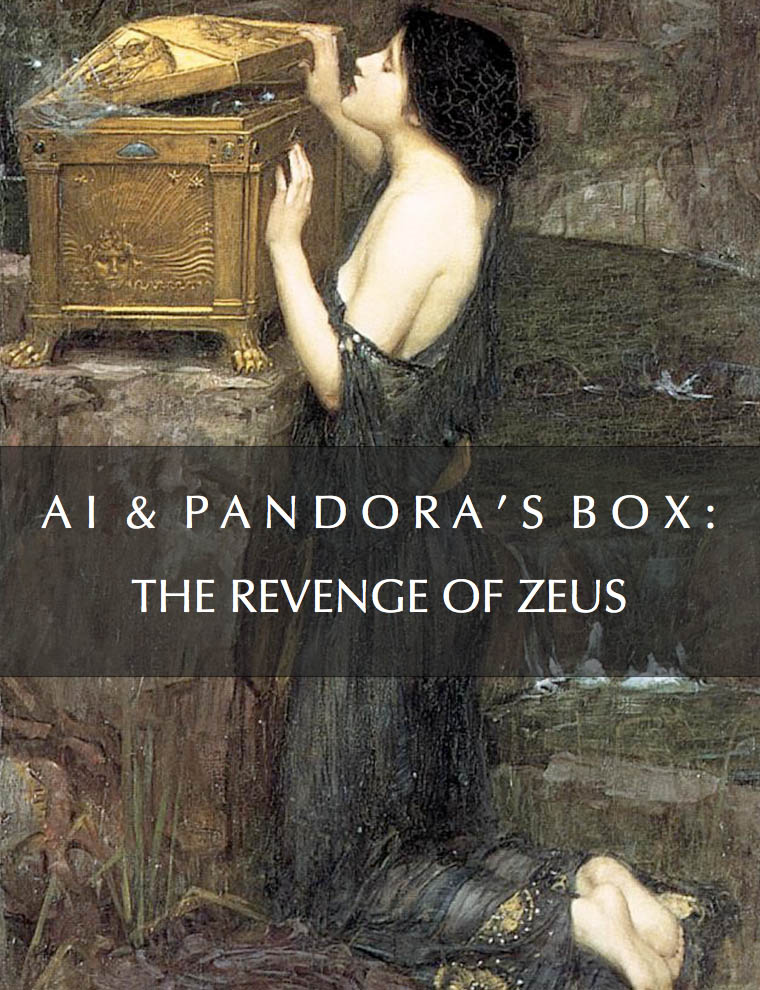
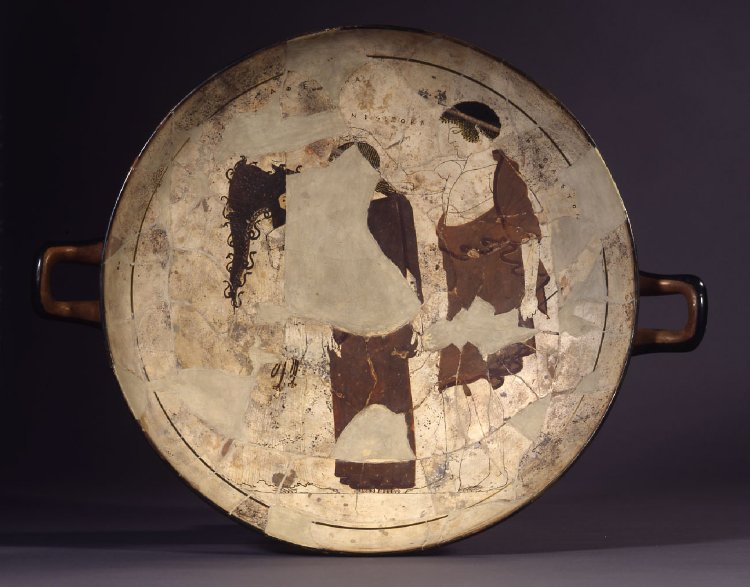
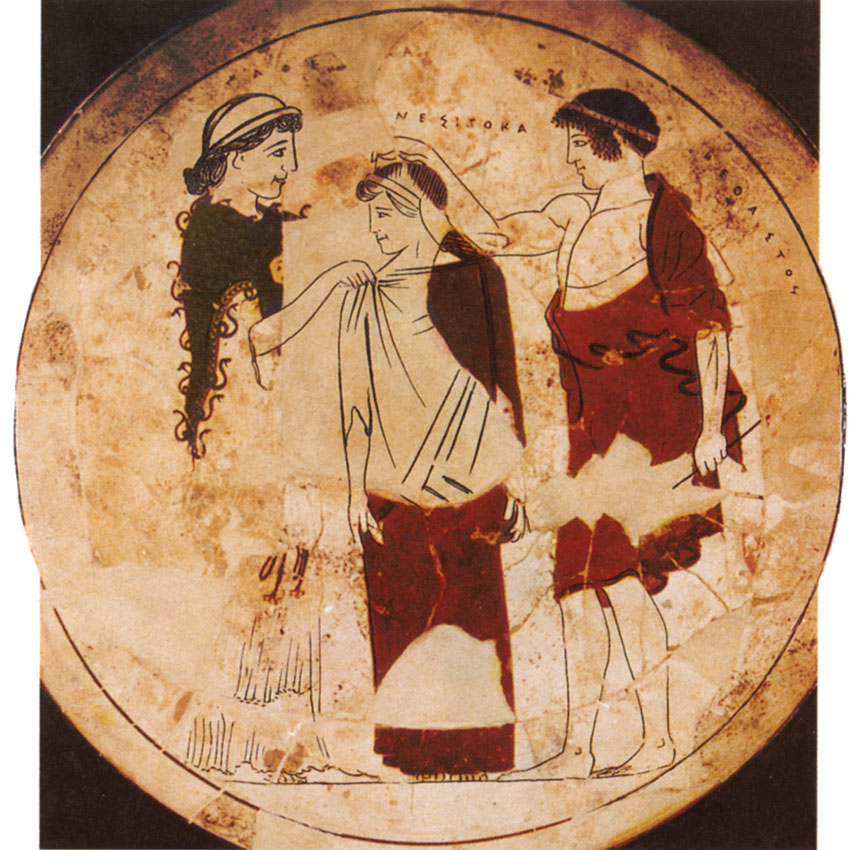
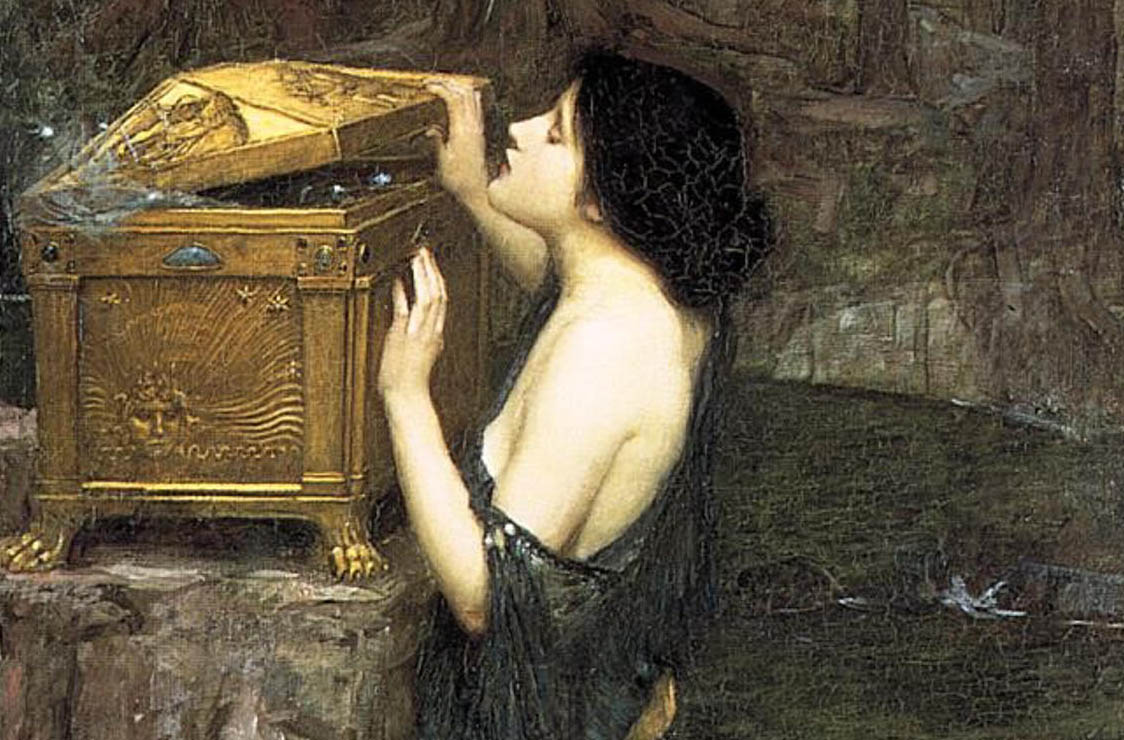
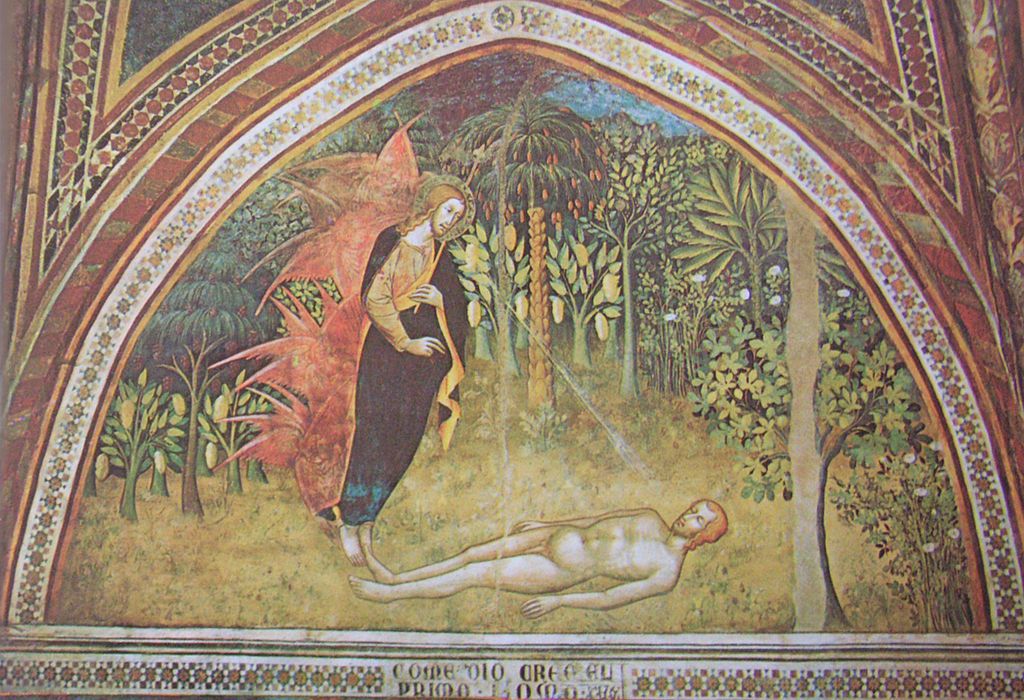
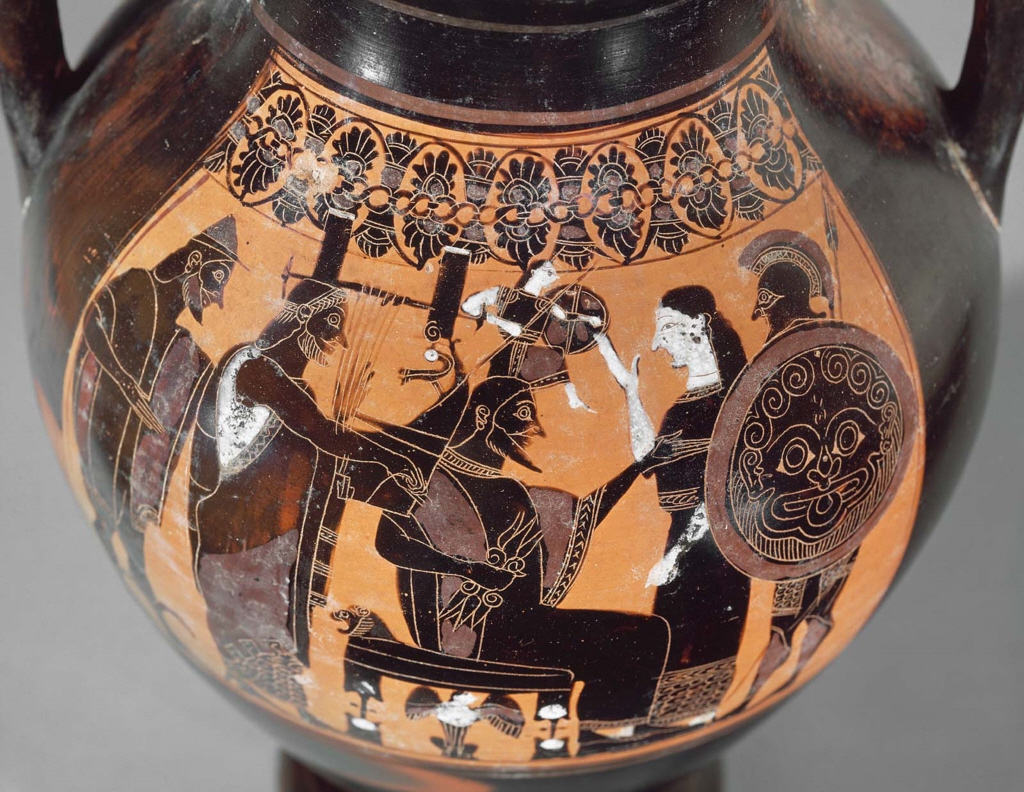
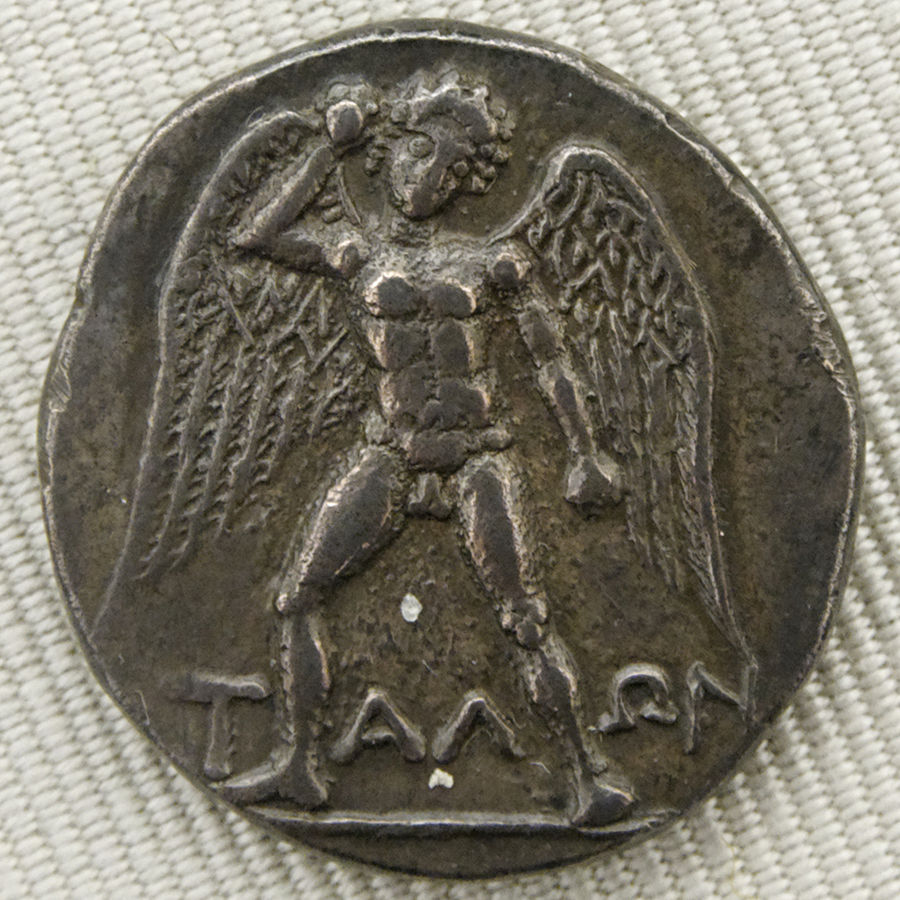
Great article, William! One question I have is, while you say we have a choice that may be true for the AI creators, do ordinary people have a choice? Is it really a free will choice for everyone or for the genetic science and computer designers to decide for us? I’m sad there is such a thing as a slaughterbot. Sad that an AI is given human rights, but glad you have diagrammed to the Greek history. Now just tell me where that bolt is so I can take out that puppy!
Lots to think about here. Thank you!
I think the Athena type is a female volunteer Ninma and 16 or so female annunaki volunteers in enki’s experiments, like Sitchin speaks of in his fictional ‘the lost book of enki’
enki being prometheus, made adam after many failures, and until Ninma volunteered herself in the creation of the adamu, and only then was enki succesful.
William, I had this article on my mind tonight while watching the new x-files, especially the last half. VERY scary to think it could be a possibility sometime in our future.
This is the second episode of the new season.
The X-Files
NEW EPISODE
TONIGHT, 7:00 PM ON KTVI-DT 2.1, 1 HR 2018 TV-14
An old friend reaches out to Mulder and Scully in a seemingly impossible way, revealing a chilling secret… More About The X-Files
A fantastic post William, I authored something similar last year using the same analogy.
https://www.linkedin.com/pulse/ai-we-opening-pandoras-jar-indy-dhami/
I loved your article, Indy. A fantastic overview of the challenges and opportunities of AI.
Thank you William, I am pleased that you liked it and to have your positive feedback is very kind.
Interesting, but the similarity between the Adam and Eve story and Pandora is the Greeks likely beat the Hebrews, who relied on oral tradition, to the page. The pagans likely ripped off many stories from those God was using to guide His people to run things after The Second Person of Whom would free man from the punishment of the original sin.